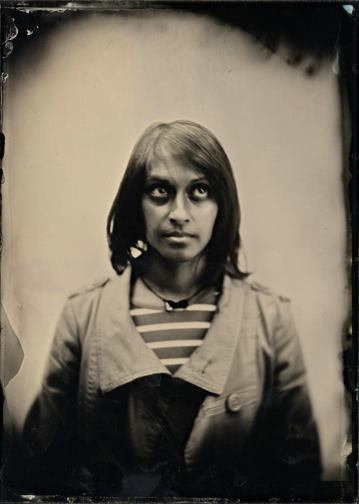I haven't said much about Manchester lately, have I?
Well, strap yourselves into whatever vehicle you imagine yourself in when you're reading this blog, dear reader, as it's going to be all
Manchester all the time from here on out. For a few weeks.
I only recently learned the difference between Great Britain and the United Kingdom. Previously, I thought they were accurately interchangeable.
Not so.
The United Kingdom is all of England, Wales, Scotland and Northern Ireland.
Great Britain is England, Scotland and Wales.
Many Americans, for that matter, are not entirely clear on how the whole England, Scotland, Wales thing works. That, readers, is for another post.
Anyway, I have
already written about Manchester's fascinating canals that re-direct six rivers under and through the city. Some of you might not know that the whole of Great Britain
(see above) is connected by canals, like some sort of secondary circulatory system, complementing its roads and riverways.
I love Manchester's canals, probably because I'm from a city with almost no water... even seeing the Chattahoochee isn't that easy in Atlanta. Funny enough, a lot of people who grew up in the UK see canals as rather disgusting things, filled with rubbish and places where ill-reputed things go on.
People live on the canals. In narrowboats, mooring here and there, not getting their post very often, rocked to sleep and slowly, slowly, travelling the cities and countryside of England.
And as is our way, people often do far more interesting things than just live their private lives on the canals.
Last week, a very cool narrowboat bookshop made its way to Manchester.
The Book Barge usually moors in Staffordshire, but sometimes it goes on tour for a few months, and it moored in Castlefield, on the beautiful Rochdale canal, which was renovated for the 2002 Commonwealth Games.
I went on Sunday, and it was raining this annoying drizzly never-going-to-be-a-thunderstorm kind of way that's very common in Manchester. I was feeling damp and vaguely annoyed that my pictures of the Book Barge & Castlefield would be so dull and gray.
Happily, I happened to also come upon the Castlefield Artisan markets! I hadn't heard of them before, but it was their very first opening! Every month, first Sunday, you'll probably find me there, because the food and fruit and veg and vintage market were amazing.
And the Book Barge was lovely, as well. As you might imagine, for a bookish person, for a boatish person, for a person who just really really likes this place, the Book Barge was... just lovely.
Manchester has a severe dearth of good little independent bookstores, ones where you can talk to the owner about new writers, and browse for hours, and find wonderful used gems alongside brand-new editions. Apparently, the owner has been bartering books for food and showers, as she motors her bookshop along the canals.
But the Book Barge is exactly that kind of place... and it just came floating up to our canalside. Wonderful.
I pulled out my camera only to learn it
had run out of batteries. Of course. I've been having real camera problems lately. I grumbled, opened my umbrella, and stepped back out into the spitty mistfall that just wouldn't quit.
I wandered by the next day, hoping to catch another chance before the barge went back home... It was a little sunnier by then...
Heehee. Check out that pun. Boatique. Indeed.
Unfortunately, the Book Barge was closed, probably for lunch, so I had to take pictures through the window. Still, you can see what a fantastic little shop the narrowboat became, with some careful thought and planning.
They have a whole section on boats.
And an inexplicable Russian section. I didn't notice any other specific language sections. Just the kind of quirk that reflects an independent bookstore's owners' preferences. I love it.
I also love that she had houseplants on the boat... or boatplants, I guess.
Luckily, even though the Book Barge was closed, I was able to take some pictures of Castlefield on a fairly sunny day. It's a beautiful part of town, all bridges and arches and tunnels.
Manchester's Beetham Tower is visible from pretty much anywhere in the city. I love this lonely skyscraper, but I don't know too many others who do... I like to think of him, skywriting sad messages to his skyscraper penpals in London... they don't write back much these days...

Near this area of Castlefield, Manchester has re-built a Roman fort. It's a bit silly. I suppose because every other English town has a Cathedral and a Roman ruin, Manchester felt the need to have one, too, despite the fact that even if there ever was a Roman fort here, it was long torn down and gone. Manchester's got so many other fascinating historical elements to it. Seems insecure for the city to need a re-built Roman fort.
At least it's in this beautiful– dare I say it–
romantic part of town. Early in our relationship, I walked Mark around this area one night, trying to show him how pretty Manchester can be. He laughed at our Roman fort. He said it was pretty. But it really couldn't compare to Cambridge.
He might be right, in some weird world, where there's an objective measure of beauty.
I think it's a matter of taste. To me, this town never stops being pretty... even in the rain. And anyway, I don't think the Book Barge even went to Cambridge. So there.
There are a number of other Manchester bloggers who have also written nice posts about the Book Barge and even taken pictures from inside it. WHOA.

















































